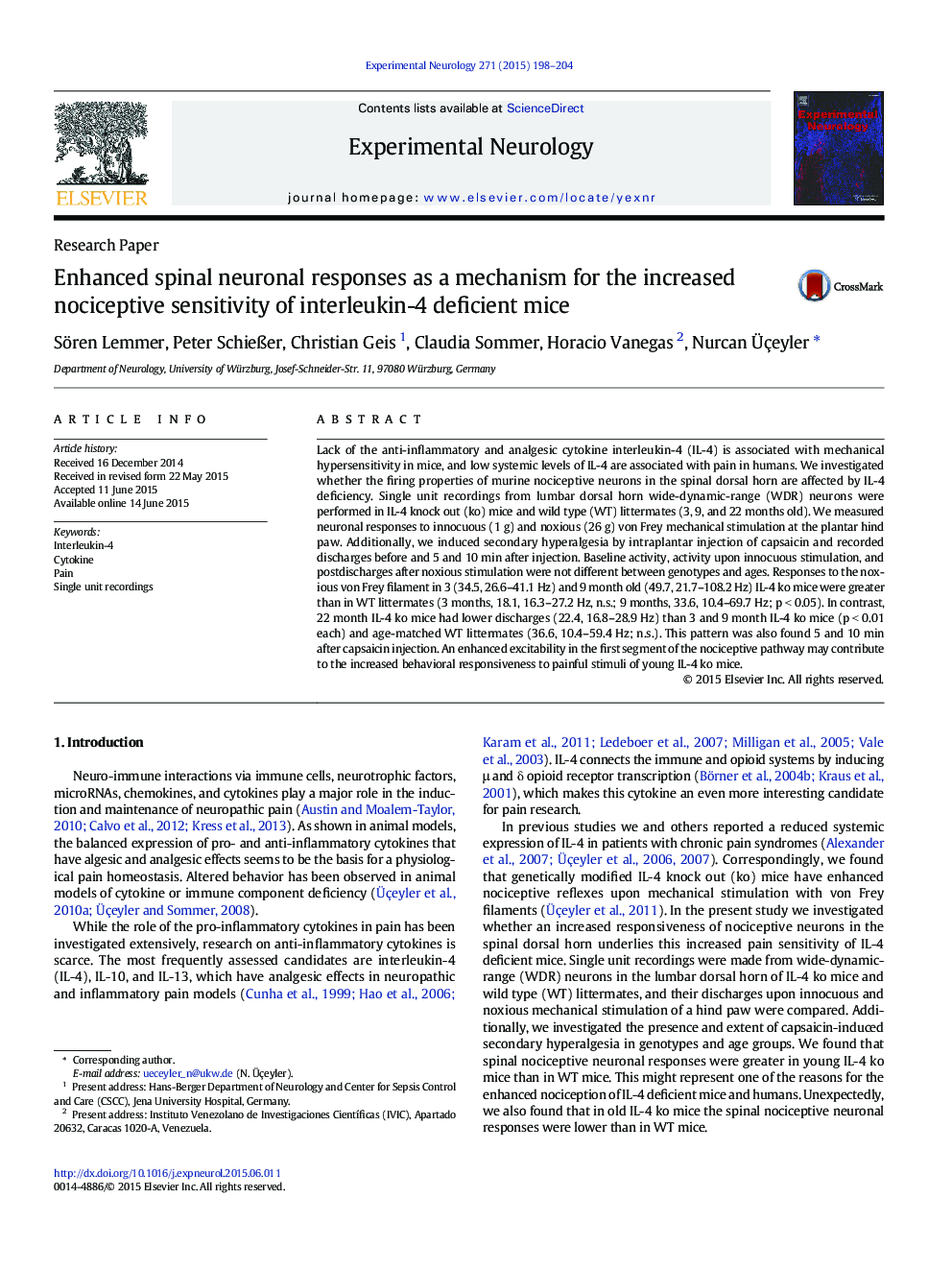| Article ID | Journal | Published Year | Pages | File Type |
|---|---|---|---|---|
| 6017238 | Experimental Neurology | 2015 | 7 Pages |
Abstract
Lack of the anti-inflammatory and analgesic cytokine interleukin-4 (IL-4) is associated with mechanical hypersensitivity in mice, and low systemic levels of IL-4 are associated with pain in humans. We investigated whether the firing properties of murine nociceptive neurons in the spinal dorsal horn are affected by IL-4 deficiency. Single unit recordings from lumbar dorsal horn wide-dynamic-range (WDR) neurons were performed in IL-4 knock out (ko) mice and wild type (WT) littermates (3, 9, and 22 months old). We measured neuronal responses to innocuous (1 g) and noxious (26 g) von Frey mechanical stimulation at the plantar hind paw. Additionally, we induced secondary hyperalgesia by intraplantar injection of capsaicin and recorded discharges before and 5 and 10 min after injection. Baseline activity, activity upon innocuous stimulation, and postdischarges after noxious stimulation were not different between genotypes and ages. Responses to the noxious von Frey filament in 3 (34.5, 26.6-41.1 Hz) and 9 month old (49.7, 21.7-108.2 Hz) IL-4 ko mice were greater than in WT littermates (3 months, 18.1, 16.3-27.2 Hz, n.s.; 9 months, 33.6, 10.4-69.7 Hz; p < 0.05). In contrast, 22 month IL-4 ko mice had lower discharges (22.4, 16.8-28.9 Hz) than 3 and 9 month IL-4 ko mice (p < 0.01 each) and age-matched WT littermates (36.6, 10.4-59.4 Hz; n.s.). This pattern was also found 5 and 10 min after capsaicin injection. An enhanced excitability in the first segment of the nociceptive pathway may contribute to the increased behavioral responsiveness to painful stimuli of young IL-4 ko mice.
Related Topics
Life Sciences
Neuroscience
Neurology
Authors
Sören Lemmer, Peter SchieÃer, Christian Geis, Claudia Sommer, Horacio Vanegas, Nurcan Ãçeyler,
